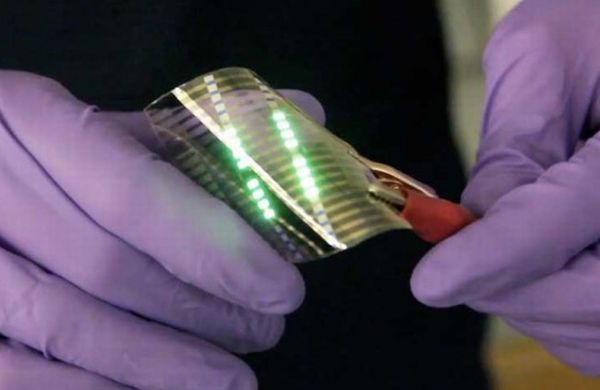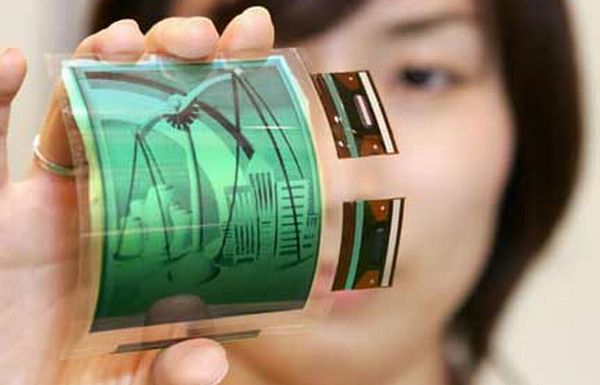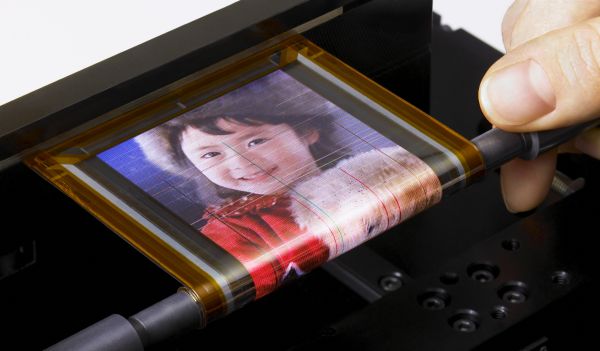
OLED, as many of you may not be aware, stands for Organic Light-Emitting Diode, and is fundamentally a light-emitting LED made up of organic compounds, which emits light on reacting with electric current.
Now for those of you who are still confused about OLEDs; it is a display technology just like LCDs, LEDs that you find on television, mobile and other display panels. But, what differentiates OLED from all the other display technologies is that it is made up of organic compounds, which are biodegradable and hence are completely ecofriendly and safe. OLED displays are principally categorized under two types; those that are made of small molecules and the ones made out of polymers of organic compounds.
One of the best features of OLED is that they do not require a back light as all the other display technologies do, this means you will get the deepest black levels, higher brightness, and deeper contrast ratio. The absence of back light also makes OLEDs thinner and flexible and this has lots of implications in making the future displays as thin as a plastic sheet can be and that has further implications that is unfathomable at this point of time.
Let’s explore the good, the bad and the ugly of the OLED technology.
The good

OLEDs have revolutionized the screen and display technologies and how we perceived the future of display technologies. One of the key benefit of OLED technology is its varied manufacturing process, which can be done in more than one way, which offers several advantages over time.
a. Lower cost in the future
The cost of manufacturing of OLEDs is expected to fall down drastically once they are mass produced and better scalability is achieved, and once it is achieved producing OLED displays would be as simple as printing on a substrate using an inkjet printer or a screen printing method.
b. Light weight and flexible plastic substrates
OLEDs also offer the advantage of fabricating them on plastic sheet like substrates, which will enable engineers to create flexible roll-up displays that can be embedded on fabrics, clothing and newspaper like displays, creating a world of colorful displays as you probably would have seen in Sci-Fi movies.
c. Wider viewing angles and improved brightness
OLEDs provide widest viewing angles possible on displays, up to 90 degrees without any shift of image with improved brightness and correct image reproduction.
d. Better power efficiency
They are extremely energy efficient as they do not require a back-light to illuminate light.
e. Response time
They offer an amazing response time of less than 0.01 ms enabling a 100, 000 Hz refresh rate possible.
f. Can this be better?
Yes, engineers are constantly working on to improve OLED technology and make it cheaper to manufacture once they become mainstream technology.
The bad
OLED displays are great but not perfect. Let’s read on to find the downside of this technology.

Now if there is goodness to OLED technology, we can expect some bad side to it too, as no technology is perfect and, without its fair share of caveats.
a. Current costs
OLED technology has not completely come of age and is yet to be mass produced and its manufacturing cost is equal to that of a standard LCD. This makes it expensive to produce at the current market scenario and makes it more expensive than LCDs.
b. Lifespan
A major concern that plagues OLED displays is their lifespan. As any organic substance would do, they decay with time and they decay faster than LCD and other types of display technologies. Though this is expected to be addressed and future OLEDs will have better lifespan than LCD and LED displays, the current set of OLED displays have a shorter lifespan than LCDs.
c. Color balance issues
Another issues faced by OLED displays is uneven color balance over a period of time as the OLED material that produces blue color tends to degrade faster than other colors and this leads to differential color output with time and unnatural color saturation.
d. Efficiency of blue OLEDs
The success of OLED display technology greatly depends on the lifetime and efficiency of blue OLEDs. It is imperative to create more efficient and deeper blue OLEDs.
e. Outdoor performance
OLEDs suffer greatly in their outdoor screen performance under the bright sunlight as they are more reflective in nature than LCD and other display technologies.
f. Power consumption
The OLED consumes about 40 percent more power than an LCD would consume to display darker objects, which jumps to 80 percent for regular images, but when it comes to a white background, an OLED can consume as much as 2 – 3 times more power than that of a regular LCD.
g. Screen burn in
Unlike other displays, each OLED pixel brightness fade at different levels depending on the contents they display. This leads to varied lifespan of different colors of OLED displays, known as burn in.
The ugly
We have seen the good, we have seen the bad. Let’s find out the worst of OLED technology.

a. Water damage
Water can damage OLED displays easily and perfect sealing of the display is warranted, and it can also affect the longevity.
b. UV sensitivity
OLED displays deteriorate with prolonged exposure to UV light.
The bottomline
Regardless of their shortcomings, they are amazing advancement in display technology and with time, all the shortcomings can be addressed with better engineering. Manufacturers have already started announcing their plans to use this technology to roll-out their future display products, as it offers the advantage of flexibility and size, which no other technology can offer. So, the OLED technology is here to stay.




